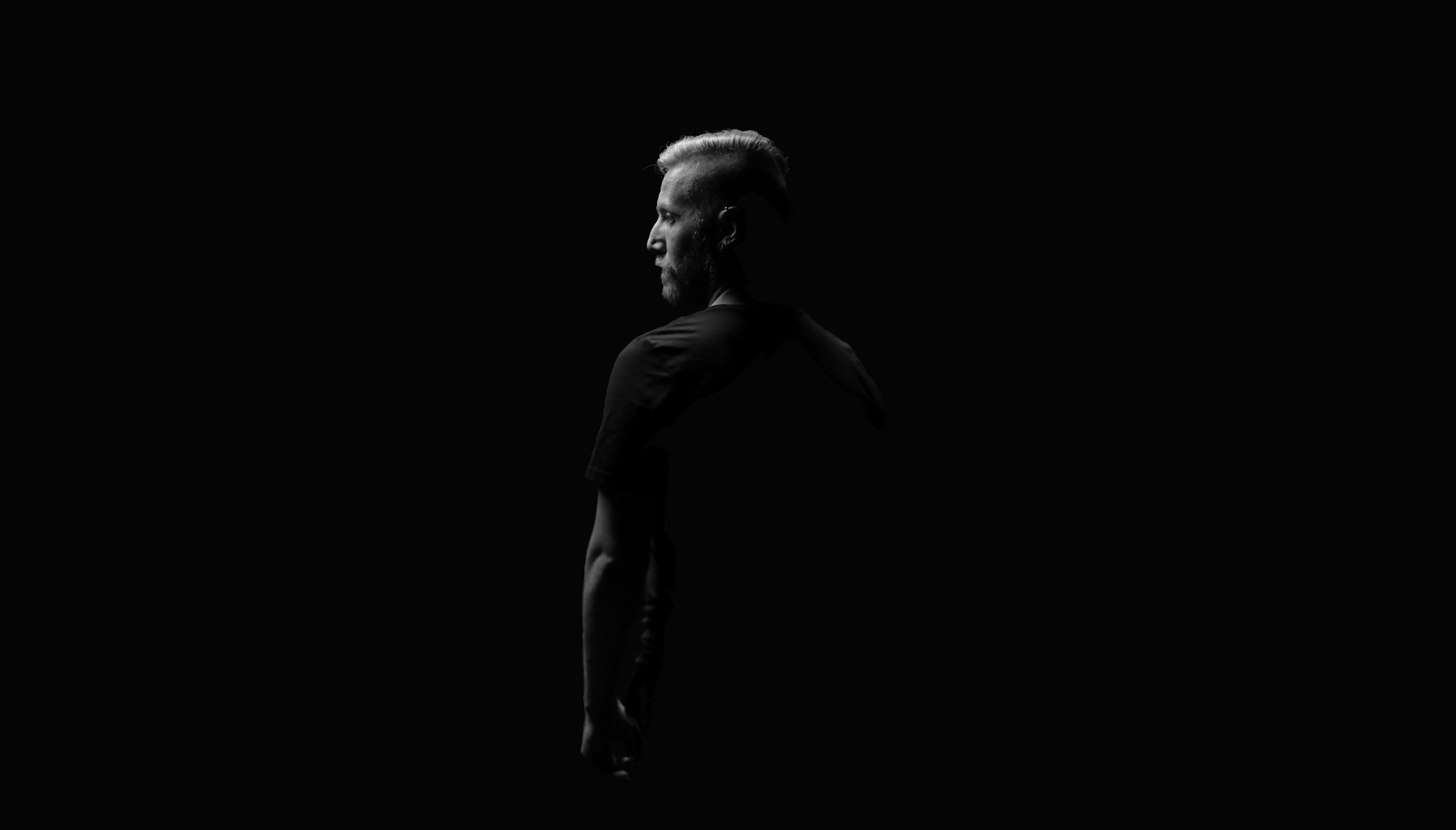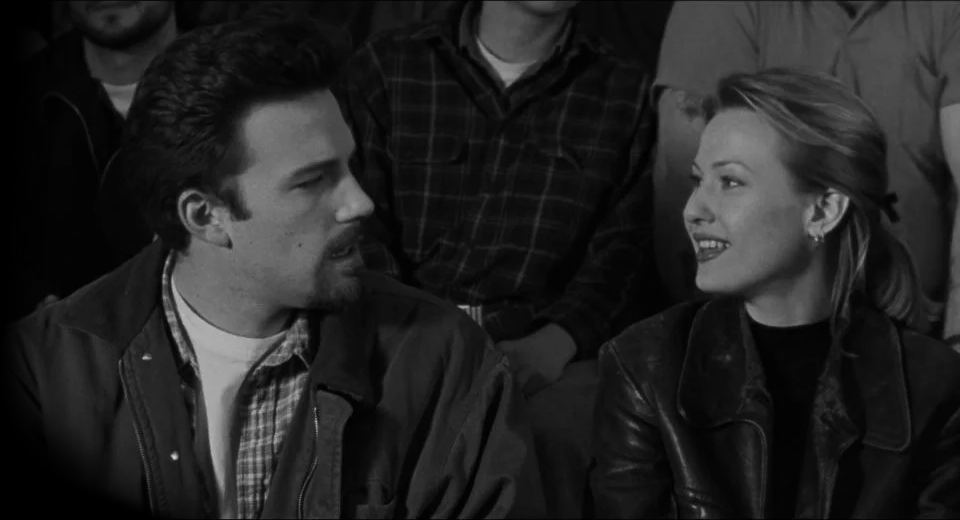The third film by celebrated independent filmmaker Kevin Smith from Red Bank, New Jersey who rose to cult icon status for his first two films Clerks (1994), and Mallrats (1995). Chasing Amy (1997) is a film made in the midst of Smith’s film explosion that came under much scrutiny due to it’s heavily sexual and heavily (for the time) controversial examination of non-linear sexuality and racial defiance.
The film follows the story of it’s title characters, Banky (Jason Lee), an aggressively sarcastic comic book co-writer and inker (tracer) on the comic book series, ‘Bluntman & Chronic’, whom he works on with co-writer and artist, Holden (Ben Affleck) and rounds out with Holden’s love interest in Alyssa ‘Fingercuffs’ Jones (Joey Lauren Adam).
While the actors in this film play convincing enough roles, I wasn’t 100% sold on the character performances after seeing Affleck, Lee, and Adam in other roles (not too far outside of the scope of the timeline of Smith’s film) which led me to believe that the direction provided by Smith fell short of his storytelling abilities through his actors and relied more on dialogue to tell his story. Since this was only Smith’s 3rd feature film and the story did call for a lot of in-frame reference material explanation, the acting could’ve been necessitated to take a hit in order to establish the referential nature of the comic book fandom and the depiction of present pop culture references.
Before reading further – be advised there are spoilers below.
One of the predominate character introductions in the film was for Banky (Jason Lee) – his character signs autographs for their comic book at a local comic book convention when he is queried about his profession as an inker. Smith utilized this scenario off the top to connect his audience to his love of comic books, but was also to show that the depiction of the comic book presence (and its use in the film) was not just a gimmick to hook that audience. It was an intelligent way to illustrate that he also knows a lot about the comic book industry and his use of that experience was something familiar and close to himself. Most notably, the struggles that inkers (or ‘tracers’) undergo in public by less artistically educated individuals is very real – and real comic book fans who understand artistic process and how an inker’s (‘tracer’s’) involvement enhances the feel and look of the artwork would never question the validity of their work or write it off as merely ‘tracing’ – thus, Smith uses this information in the film to his advantage to convey his knowledge of the subject matter and introduces one of the title characters almost flawlessly utilizing that as a character development melting point.
Smith, of course, uses the opening scenes at the comic book convention to also introduce Holden (Bed Affleck), who is much more aloof being the artist on the book, and together they venture into one of the comic book creator speaking panels – specifically, the minorities table – where we find Holden’s love interest for the film, Alyssa (Joey Lauren Adam), alongside Hooper X (Dwight Ewell), whose panel lecture about black oppression and depiction in comic books (before being engaged by Banky and Holden in a pre-planned publicity stunt) – this unites the characters together in a realistic fashion and establishes a believable back story in how they all interact and know each other while clearly determining the character archetypes for the film.
Further dissecting Smith’s storyline, a lot of the conflict introduced surrounds Alyssa’s and Hooper’s sexuality – wherein Hooper is a ‘.. minority within a minority..’ because he is not only gay, but also black, and Alyssa is a lesbian (but non-linearly) – setting the tone for the audience (not forgetting this story was originally told in the mid to late 90’s) to learn along with Holden about straight white male privilege and objectification of woman in fantasy – which is largely a topic not dissected in film and why the film drew a lot of heat and controversy – after all, the film was targeted at high school and college students in the emergent period of human history where helicopter parents was a growing trend in raising children.
Switching off of story development, and into production / post-production, I felt one of the most compelling scenes in the film was at the hockey arena when Holden finally confronts Alyssa about her high school ‘Fingercuffs’ nickname.
In my opinion, I felt that this scene was one of the most well done in the film both in production and in post (editing), and I think this was achieved because of Smith’s love of hockey. Being a turning point in the film, I want to believe that Smith did this (the introduction of hockey) so that he would pay extra care to the execution in representing the symbolic and parallel storylines of the slowly building conflict between Holden and Alyssa, and the hockey players on the ice – moving towards a gloves off showdown with the hockey fight’s final blow being dealt as Alyssa explodes and admits to Holden that she ‘.. blew him (Rick) while Cohee fucked..’ her – hitting Holden with a devastating revelation of truth.
The execution in the timing, editing, shots depicted within this scene is almost perfect. All of the elements creating the locked scene – the shots, the sound fx, the movement, and the lighting (while you can see some of the errors due to the scope of the scene and number of actors involved is understandable), all marry this as arguably the largest conflict in the film. Some would disagree and cite the final scene with Holden, Banky, and Alyssa together where Holden proposes a three-way to be the climactic conflict scene – but I would disagree with that argument as it’s an offshoot and failure to save the romantic aspect of the storyline as Holden completes the hockey arena scene by announcing ‘I want us to be a normal couple’ to Alyssa, before walking away. From this scene, we’ve already been informed this isn’t salvageable and the three-way scene just solidifies the outcome even though there is a slight potential for resolution.
As with many other films of the 90’s geared towards the high school and college target audience, it wasn’t shot to be ‘beautiful’ or ‘cinematic’, but instead was a meant to depict real life and create representation of things happening in the lives of the audience of that time. For that reason, as illustrated above (and because of the somewhat relaxed budget of $250,000 USD) production costs could take a hit making the film more along the lines of an independent film or low-budget feature – at times with lighting and set design budgets being identifiable through badly diffused light or unnatural looking props and fixtures.
But that was also the magic of ’90’s cinema – it didn’t have to be perfect to be enjoyed.
All in all though, Chasing Amy (1997) is an enjoyable and entertaining film to watch. It really illustrates to audiences the ignorance that straight white men in the 90’s (and still today, but not as proportional) had to issues of this magnitude (racial, sexuality, class) and watching it in present day would likely elicit very different reactions than it did then (as was illustrated through the reactions of my co-viewer whom had not viewed it prior).
★ ★ ★ ½ ☆ ☆
Note:
This review was originally written as an academic paper in Q1 2017.


